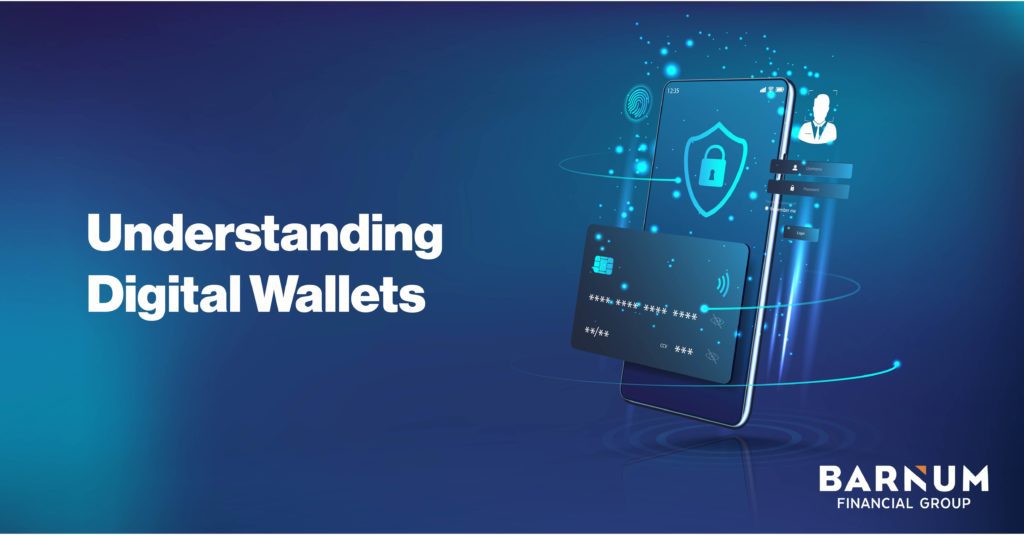Digital wallets are here to stay. They handle digital funds, credit cards, gift cards and more. Learn how to capitalize on this technology for your daily life.

What They Are
Digital wallets live on many mobile devices. They allow you to make purchases, store financial information, manage gift cards, and track your payment history. More businesses accept payment via digital wallets, which alleviates the need to always have cash on you. Some wallets even allow identification cards and driver’s licenses.
There are many different options to choose from when looking to get your own digital wallet, such as Apple Pay, Android Pay, Google Wallet, Cash App, PayPal, Venmo and more. Each have pros and cons dealing with the digital wallet’s ease of use, transactional fees, and flexibility with businesses and online retailers. Remember, not every seller accepts every digital wallet. Make sure you do your research into which digital wallet might be right for you.
How They Work
How it works is very simple. Let’s say you’re buying tickets at your local movie theater with funds from a digital wallet. When making the purchase, your card information, which is securely stored in your digital wallet, is sent from your device to the point-of-sale terminal. From there your digital funds pass through the payment processors or any other third parties involved in credit/debit card transactions on its way to the credit card networks and banks to complete the transaction.
Many people equate digital wallets with cryptocurrency, but these are two different entities. You can maintain a digital wallet without dealing in crypto. Some digital wallets like Apple Pay and Google Pay allow you to download a Bitpay debit card, which converts cryptocurrency into dollars.
Potential Concerns
With new technology, there’s always concerns about privacy and security. It’s important to know what that looks like with digital wallets. When you’re making a purchase with a digital wallet, you’re not sharing your credit card or bank information with a retailer. That information lives with a third-party provider. It’s secured behind password and biometrics (Face ID or fingerprint). Even if you lose your mobile device, your digital wallet would still be available on your new device.
According to the Congressional Research Service, there’s a difference between funds in your digital wallets and deposits. A recently released report by the organization on digital wallet technology with relation to cybersecurity, consumer protection and data privacy stresses that funds in digital wallets are not considered deposits and thus would not be covered by deposit insurance. It also discusses the difference in protection of credit or debit cards and cryptocurrency wallets. You can find out more about the overview here.
Another concern from users could be the limited number of retailers that accept payments through digital wallets. While that may have been the case in the early years (The first digital wallet was introduced in 2011), more retailers accept the use of digital wallets for purchases. According to a survey on Statista.com, as of December 2019, North American retailers have increased their acceptance of digital payment methods. And even more retailers are planning on accepting digital payments in the next two years.
Here to Stay
One example sees Apply Pay accepted by 63% of the retailers polled for the survey. Another 26% of retailers plan on accepting Apple Pay in the next 2 years. At the time of this article, around 89% of these retailers are now accepting digital payments. Find the complete survey here.
The advent of digital wallets is a prime example of technology created to enhance a consumer’s life. Many of us are already in the digital space paying bills, making bank transfers, and shopping online for the holiday season. Using and maintaining digital wallets is a logical next step. Odds are, you already have the option on your smartphone or tablet to create one today.



